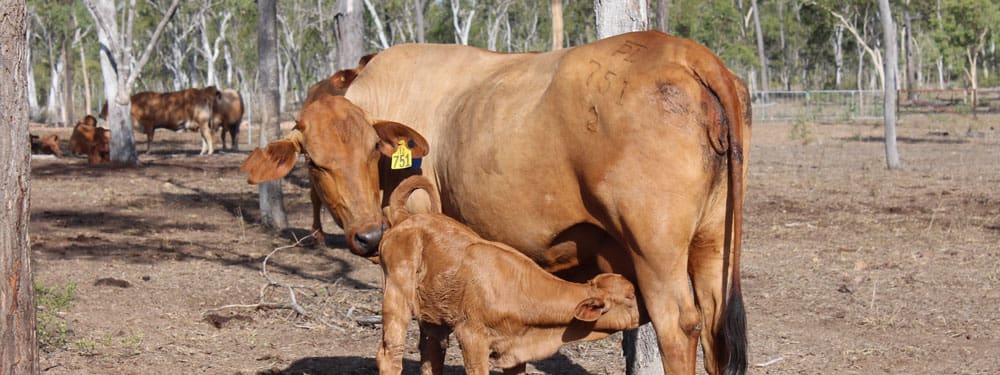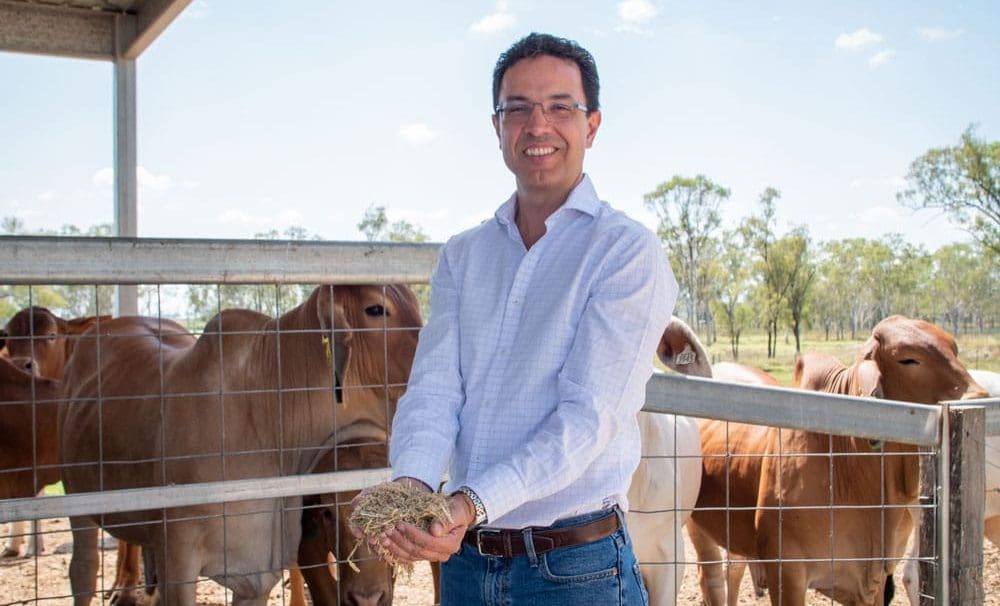
IMPROVING nutrition a few weeks before calving is successfully boosting health outcomes for both calves and breeders under challenging grazing conditions in Northern Australia.
The Calf Alive project led by The University of Queensland is trialling ways to overcome the impacts of poor diet and heat stress on beef properties in North Queensland and the Northern Territory.
Project lead Associate Professor Luis Prada e Silva said the results were extremely promising.
“For two years now, we’ve been improving nutrition in the last four to six weeks before calving and we’re seeing clear benefits in the milk delivery to the calves,” Dr Prada e Silva said.
“At weaning, both the supplemented cows and calves are heavier, resulting in an extra 19kg of weight production per lactating cow.”
He said calf loss in beef breeding herds was a problem globally and a significant productivity challenge for the Northern Australian beef cattle industry.
Low fertility is another issue, with first-lactation heifers struggling to maintain decent milk production and return to fertility.
“We are seeing a significant increase in the conception rate of these supplemented first-calf heifers,” Dr Prada e Silva said.
“Without good nutrition, it’s not easy for a cow to become pregnant again shortly after calving.

Luis Prada e Silva
The trial found that extra nutrition in those last critical weeks is boosting pregnancy rates in the four months after calving from 50pc to 65pc.
“That means this extra nutrition is resulting in a heavier calf at weaning and a cow that has better body reserves to become pregnant again the next year – so it’s a carry-over effect,” he said.
“It gives producers the benefit of better production this year and even better production next year.”
Dr Prada e Silva said the team still had more goals to achieve.
“We want to be able to quantify the impact of improving the nutrition of pregnant cows so producers can make their own decisions on whether it’s worthwhile, and the best way to make it happen,” he said.
Heat stress
A second outcome would be an index for heat stress in northern beef systems.
Sensors are being used to evaluate how animals respond to heat stress, the impact on calf survival and the overall productivity of herds.
“By monitoring how cattle behaviour changes in response to climate events and the impact on production, we can determine the appropriate heat stress index associated with loss of production.
Researchers are also working on a new tail hair test for early identification of cows with better reproductive efficiency and higher liveweight production.
“One goal of the project is to verify if nitrogen isotopes in the tail hair can be used to predict future performance of cows,” Dr Prada e Silva said.
“Early identification of more productive cows can have a significant impact on the industry.”
- The Calf Alive project receives funding from Meat and Livestock Australia, The University of Queensland, Feedworks and the Queensland Government via the Department of Agriculture and Fisheries. The Northern Breeding Business (NB2) program and Northern Australia Beef Research Council also support this project.
Source: QAAFI
